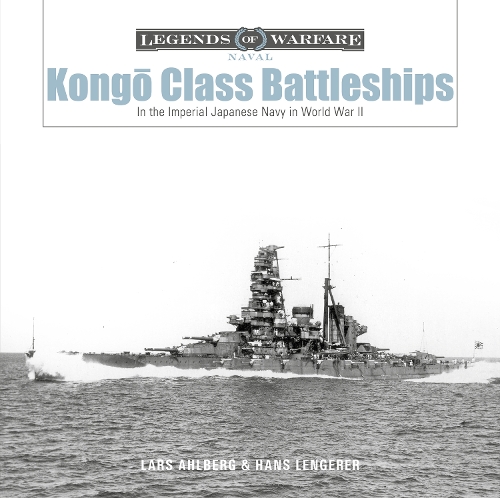
Kong-Class Battleships: In the Imperial Japanese Navy in World War II
(Hardback)
Publishing Details
Kong-Class Battleships: In the Imperial Japanese Navy in World War II
By (Author) Lars Ahlberg
By (author) Hans Lengerer
Schiffer Publishing Ltd
Schiffer Publishing Ltd
8th June 2021
United States
Classifications
General
Non Fiction
Naval forces and warfare
Second World War
Modern warfare
623.8253
Physical Properties
Hardback
128
Width 229mm, Height 229mm
513g
Description
The battleships of the Kongo class were the oldest, smallest, and fastest battleships in the Imperial Japanese Navy during WWII. Initially classified as battle cruisers, the lead ship in the class, Kongo, was built in England just prior to WWI. The remaining three ships in the class - Haruna, Kirishima, and Hiei - were all built and completed in Japan by 1915. All four ships were highly reconfigured in the 1920s, and they were reclassified as battleships in the 1930s. The four Kongo-class ships were the most active among the 12 WWII-era Japanese battleships and saw heavy combat throughout the war in such major campaigns as Pearl Harbor, Midway, Guadalcanal, and Leyte. All four ships were sunk by Allied forces by war's end. This book features rare Japanese primary source material, including numerous photos, line schemes, and detailed charts. AUTHORS: Lars Ahlberg and Hans Lengerer have coauthored books about the aircraft carrier Taiho, of the Yamato class of ships. They privately publish Contributions to the History of Imperial Japanese Warships. SELLING POINTS: . Design and construction of the Imperial Japanese Navy's battleships of the Kongo class . Fought at Pearl Harbor, Midway, Guadalcanal, and Leyte . Covers little-known aspects of the Imperial Japanese naval ships of WWII 150 b/w photographs
Author Bio
Lars Ahlberg and Hans Lengerer have coauthored books about the aircraft carrier Taih, of the Yamato class of ships. They privately publish Contributions to the History of Imperial Japanese Warships. Hans Lengerer and Lars Ahlberg have coauthored books about the aircraft carrier Taih, the armor-clad Fus- to Kong-class battle cruisers, and the Yamato-class battleships, the last of which was recently published. They privately publish Contributions to the History of Imperial Japanese Warships.
